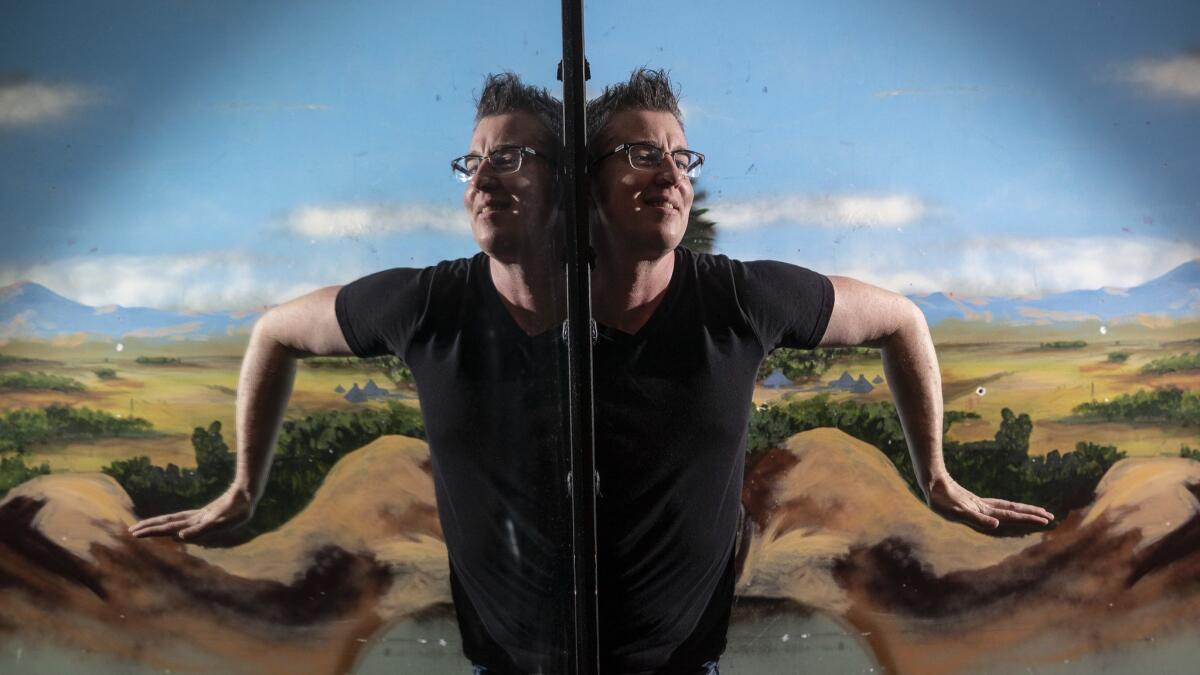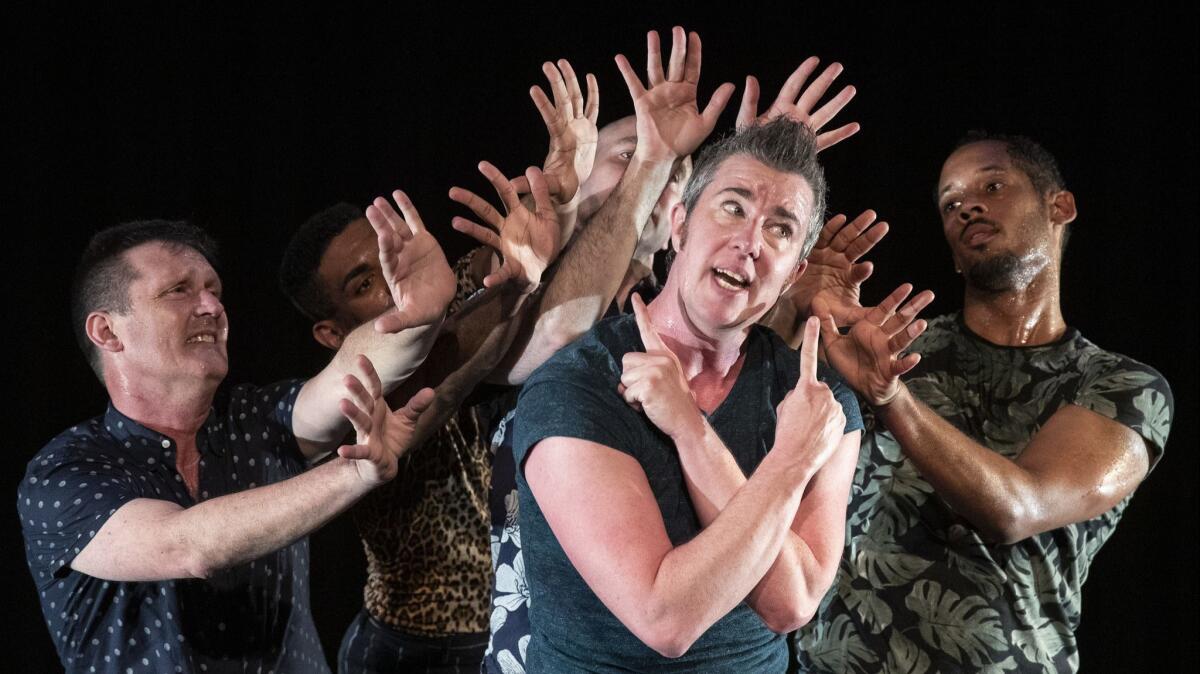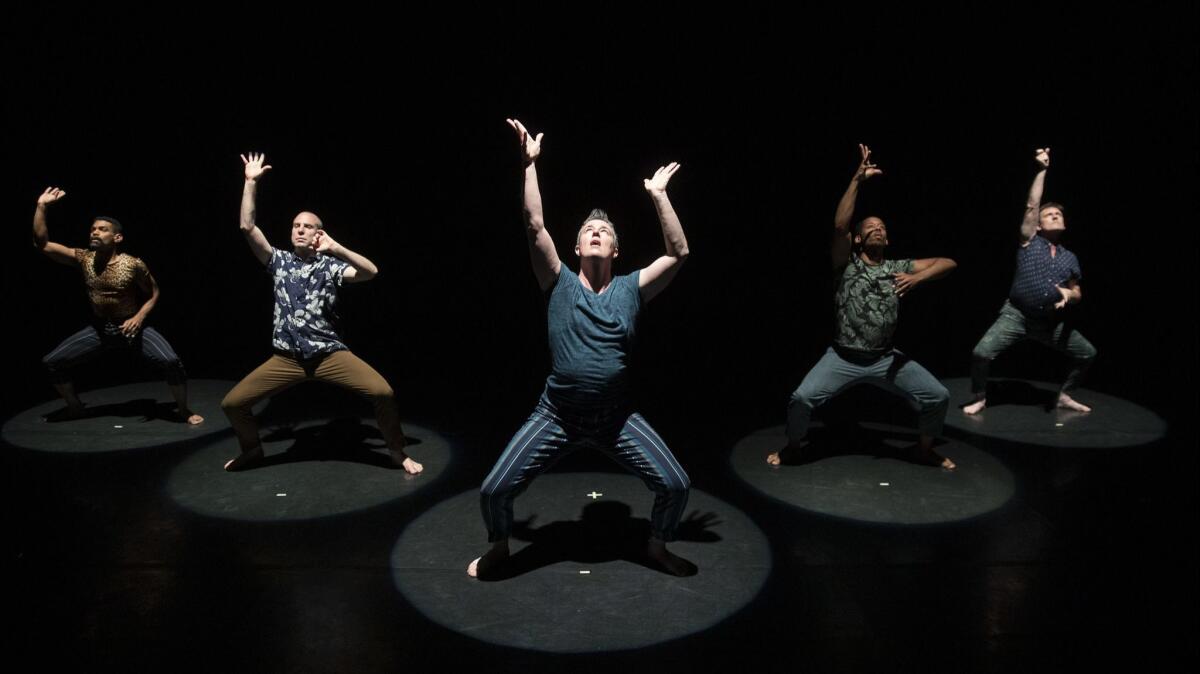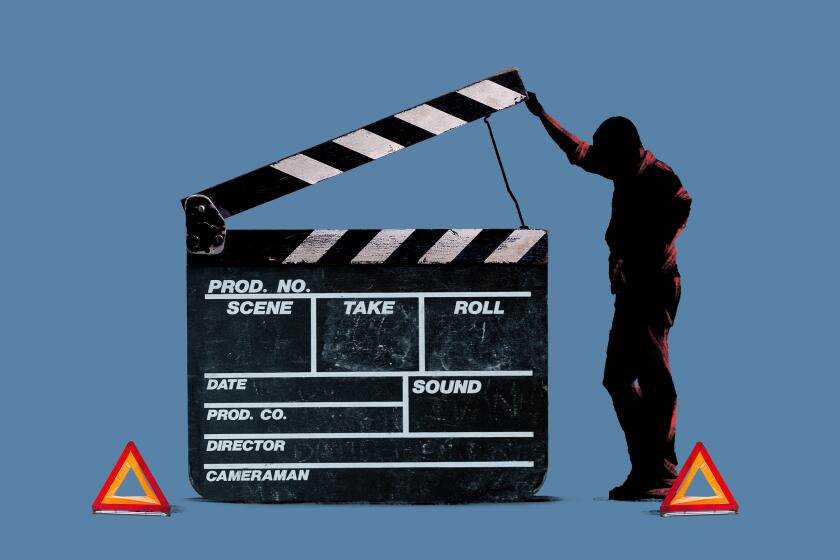This choreographer uses dance to help transgender communities feel seen

- Share via
In the opening vignette of Sean Dorsey’s latest work, “Boys in Trouble,” the choreographer performs a gentle solo within the confines of a single spotlight. As he dances, his recorded voice fills the theater with reflections on his experience as a transgender man.
“I’m a shapeshifter. I’ve literally changed the shape and smell of my own body,” he says, before he’s joined by the other four men who make up his San Francisco company Sean Dorsey Dance. “You can’t pretend that’s not powerful.”
Premiering in April 2018 in San Francisco, “Boys in Trouble” is a modern and theatrical dance work about American masculinity. Split into 22 sections, it digs into the vastly different experiences of manhood, including what it means to break free from the traditional bounds of masculinity and how everyday experiences, like a late-night bus ride, can quickly turn terrifying as a transgender person.
On Friday and Saturday, Dorsey and his company will perform the evening-length work at the Highways Performance Space, the queer-centric venue in Santa Monica.
Creating “Boys in Trouble” was a three-year process, Dorsey said during a recent rehearsal. The choreographer, 46, held community forums across the nation about masculinity. Common themes that emerged included body shame, self-esteem, self-harm and how shame could drive “people perceived or socialized to be masculine to bully and to be violent.”
Ideas from those workshops informed Dorsey’s choreography and spoken-word segments in the show. He also turned to his dancers, who include gay and bisexual men, to incorporate their own life experiences.
“The work is very much of our bodies and bones and blood,” Dorsey said. “I’m shaping it and directing it, but everyone’s humanity is really just super interwoven into the work.”

Dorsey and company are about halfway through touring “Boys in Trouble” to more than 20 cities. They are performing the work in major cities but also in small, conservative communities.
Last fall Dorsey wasn’t sure what to expect when his company stopped in Whitewater, Wis. But he was moved hearing from both the LGBTQ community there as well as “young, heterosexual, student jocks” about how the work resonated.
Dorsey hopes everyone can connect with the work, regardless of gender or sexual identity, but it’s especially important that transgender and gender-nonconforming people can feel seen and acknowledged through dance.
Although his company is in its 15th season, has received numerous accolades, has performed at the celebrated Joyce Theater in New York and has toured abroad, Dorsey recalled the profound isolation of the early days of his career.
“I never imagined until I was literally in my mid-20s, that someone like me could become a professional dancer, let alone a choreographer,” Dorsey said. “And that was because I never saw a single person like me in modern dance.”
Even as gay rights battles are won, transgender people continue to face obstacles »
Raised in Vancouver, British Columbia, Dorsey grew up writing stories, performing in school and dancing to records in his living room. He spent his early 20s pursuing social justice organizing before taking a break from grad school to study dance. That’s where he encountered the struggles of being transgender in the concert dance world.
“The kind of things I had struggled with in nonprofessional level classes I was taking were only intensified,” he said, referring to issues such as bathroom access and gendered costumes.
Dorsey recalled being chastised for his first piece of choreography — a queer duet — by the director of the dance school. The tradition of modern dance and ballet is “completely built on a foundation of assumed heterosexuality and cisgender, gender-conforming body and identity,” he said.
These experiences fueled the choreographer to fill a void, despite a lack of transgender peers or mentors in the concert dance world.
After moving to San Francisco, Dorsey in 2002 founded the nonprofit Fresh Meat Productions, which has paid more than 500 transgender, gender-nonconforming and queer artists over its 17-year history.
In 2004 he launched Sean Dorsey Dance, a company where he could explore the experiences of transgender and LGBTQ community. Its works include 2009’s “Uncovered: The Diary Project,” which featured a suite of dances based on journals from Bay Area trans and gay activist Lou Sullivan, and 2015’s “The Missing Generation” about forgotten LGBTQ survivors of the AIDS epidemic.
In recent years, Dorsey has met a few other professional modern dancers and choreographers who are transgender or nonbinary. He’s also received encouraging messages from people who have been intimidated by the binary confines of the dance world but were inspired to pursue the art form after seeing his work.
Although the dance world is on track to become more inclusive, there’s still much work to be done, he said. He pointed to a dearth of transgender and gender-nonconforming people in key arts jobs.
“If we don’t see ourselves in positions of cultural leadership and creativity and power, it’s impossible to imagine a pathway for us getting there.”

=====
Sean Dorsey Dance — “Boys in Trouble”
Where: Highways Performance Space, 18th Street Arts Center, 1651 18th St., Santa Monica
When: 8:30 p.m. Friday and Saturday
Admission: $20-$25
Info: highwaysperformance.org
More to Read
The biggest entertainment stories
Get our big stories about Hollywood, film, television, music, arts, culture and more right in your inbox as soon as they publish.
You may occasionally receive promotional content from the Los Angeles Times.










